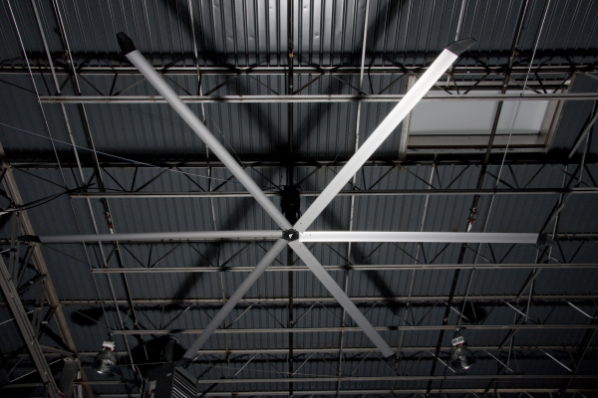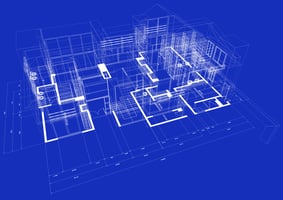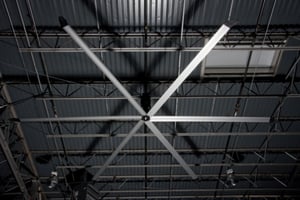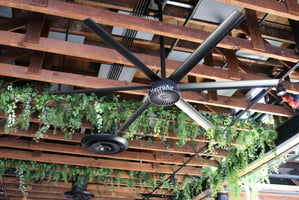MacroAir HVLS ceiling fans offer a very effective solution for maintaining comfort. These...
3 HVLS Fan Placement Tricks that Reduce Costs
The way a high volume, low speed (HVLS) fan works is a matter of simple physics; the long, airfoil-shaped blades of the fan slowly circulate a large column of air downward and outward along the floor. This causes air to travel through the space in a large circular motion, keeping all the air constantly moving rather than letting pockets of it sit stagnantly. However, did you know fan placement is almost as important as fan size when it comes to reducing costs?
Not all HVLS fans are the same, making them even more beneficial because they are designed to maximize airflow for your specific needs. This means that whether you are moving air through office space, a temperature-sensitive storage facility, or a large industrial warehouse, the HVLS fan most appropriate for your needs will provide you with a beneficial return on investment.
Ensure Adequate Spacing

To maximize the efficiency of your HVLS fan and reduce your facility’s energy cost and consumption, one of the things you will want to take into consideration is spacing around the blades. You should give a few feet on all sides to make sure the fan can circulate air properly without any obstacles, including a lack of intake space above the fan caused by installing the fan too close to the ceiling. Additionally, higher structures on the floor (shelving, racks, partitions, etc.) can also disrupt the downward flow of air and prevent the full effect from reaching certain areas in the room.
Square Footage
If the circulation of your HVLS fan is adequate for the amount of square footage you are installing the fan for, you can safely assume that a central installation point is sufficient. If you have a much larger area that needs circulation, you may want to consider either installing a larger HVLS fan or possibly installing an additional fan. A second fan can be used in conjunction with the first to break up the circulation areas in your business into sections that meet your needs without significantly compromising your energy consumption.
Size Does Matter

Lastly, the size of your HVLS fan's blades plays a role in fan placement. If your fan is too small, it won't get the job done. You can consult with a MacroAir HVLS fan representative to determine what size would be appropriate for your business needs.
As you can see, there are several factors when determining HVLS fan placement that will have an impact on the effectiveness and efficiency of the fan. It isn't just about installing the largest fan you can find in your facility. Once you know how much space you want to circulate air through, you can then start focusing on the other key points to fan selection and placement that will enable you to maximize the advantages of your HVLS fan.


